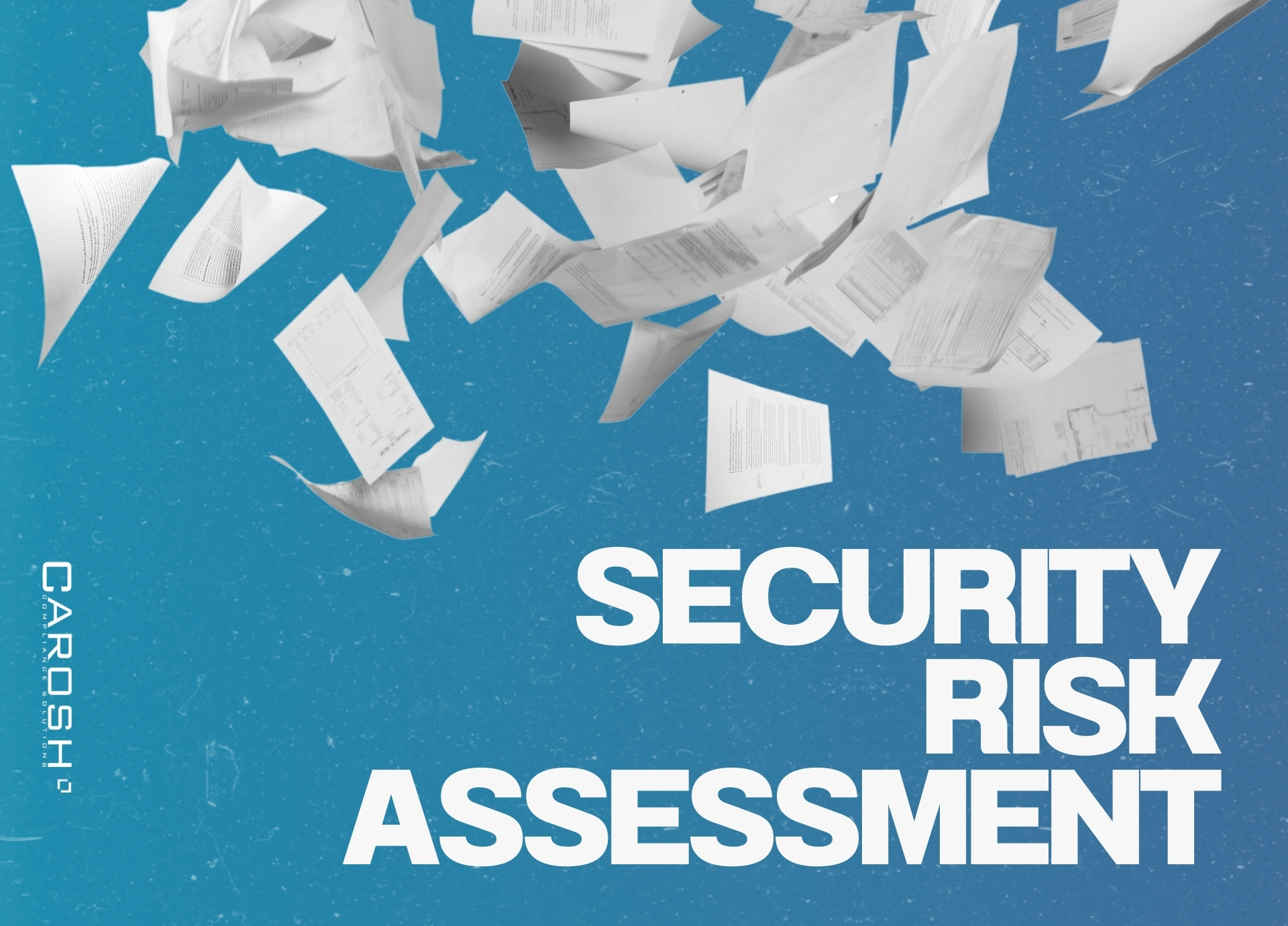
Table of Contents
Key Components of a HIPAA Data Breach
HIPAA Breach Notification Rule
Consequences of a HIPAA Data Breach
In the digital age, protecting patient information has become a paramount concern for healthcare organizations and their business associates. The HIPAA Security Risk Assessment (SRA) stands as a cornerstone in the effort to safeguard Protected Health Information (PHI), especially in electronic form (ePHI). This comprehensive guide delves into the main aspects of conducting a HIPAA SRA, from understanding its importance and key components to navigating the steps involved in its execution. By adhering to these guidelines, entities can ensure compliance with regulatory requirements, bolster data protection efforts, and maintain the trust of their patients.
Importance of HIPAA Security Risk Assessment
The significance of conducting a HIPAA Security Risk Assessment (SRA) cannot be overstated, as it serves as a linchpin in fulfilling regulatory obligations and ensuring the robust protection of Protected Health Information (PHI), especially in its electronic form (ePHI). Under the HIPAA Security Rule, healthcare organizations and their business associates are mandated to perform SRAs to adhere to established standards for the safeguarding of ePHI. Neglecting to carry out a comprehensive risk assessment not only breaches this directive but also exposes the entity to substantial fines and penalties, underscoring the importance of compliance in the healthcare sector.

Proactive Data Protection through HIPAA Security Risk Assessment (SRA)
Beyond meeting regulatory requirements, the HIPAA SRA plays a crucial role in bolstering data protection. Through the systematic identification of vulnerabilities in how PHI is managed, the assessment acts as a proactive measure to forestall potential data breaches and unauthorized disclosures. This proactive approach is instrumental in securing sensitive patient information against a landscape of evolving cyber threats and internal risks.
Maintaining Integrity and Patient Trust
Moreover, the integrity, confidentiality, and availability of PHI are fundamental in maintaining patient trust and safeguarding the organization’s reputation. A breach or mishandling of PHI can erode trust and lead to reputational harm, which can have lasting negative impacts on an organization’s ability to provide care and maintain its patient base. Thus, the HIPAA SRA is not just a regulatory formality but an essential component of an organization’s strategy to uphold patient confidence and protect its standing in the healthcare community.
Components of HIPAA Risk Assessment
The key components of a HIPAA Risk Assessment include a comprehensive review of where and how PHI is stored, processed, or transmitted, alongside an evaluation of potential threats and vulnerabilities to this information. This involves a thorough examination of current security measures and their efficacy in protecting PHI from identified risks. By addressing these components, healthcare organizations can develop and implement a robust risk management plan, ensuring the ongoing protection of patient information in compliance with HIPAA regulations.
Key Components of a HIPAA Risk Assessment
A HIPAA Risk Assessment is a detailed process designed to ensure the protection of electronic Protected Health Information (ePHI) within healthcare organizations. This comprehensive evaluation encompasses several key components, each vital to the assessment’s overall effectiveness in identifying and mitigating risks to ePHI.

Comprehensive Scope of HIPAA Risk Assessment
The scope of the assessment is the foundational step, involving a meticulous identification of all the locations, processes, and entities involved in the storage, processing, or transmission of ePHI. This broad overview not only covers on-premises systems but also extends to cloud-based services and third-party vendors, ensuring a complete mapping of where and how ePHI is handled within and outside the organization.
Threat and Vulnerability Assessment
Following the establishment of the assessment’s scope, the process continues with the assessment of potential threats and vulnerabilities. This stage is used in identifying both internal and external risks to ePHI, ranging from unauthorized access and cyberattacks to employee negligence and the impact of natural disasters. By understanding the various ways in which ePHI could be compromised, organizations can better prepare to safeguard against these threats.
Evaluating Current Security Measures
Evaluating the current security measures in place forms another core component of the HIPAA Risk Assessment. This involves a thorough review of the physical, technical, and administrative safeguards implemented by the organization to protect ePHI. The effectiveness of these measures is analyzed to determine their adequacy in addressing the identified threats and vulnerabilities.
Impact and Likelihood Analysis
The assessment also involves a detailed impact and likelihood analysis. This step is crucial for gauging the potential impact of each identified threat on the organization’s ePHI and the likelihood of such events occurring. Understanding the severity and probability of these risks enables organizations to prioritize their mitigation efforts effectively.
Development of a Risk Management Plan
Finally, the development of a risk management plan is a key outcome of the HIPAA Risk Assessment. This strategic plan outlines specific steps the organization will take to mitigate identified risks to an acceptable level. It encompasses the implementation of additional security measures, policies, and procedures tailored to address the unique vulnerabilities and threats uncovered during the assessment. This proactive approach ensures that organizations are not only compliant with HIPAA regulations but are also taking concrete steps to protect the privacy and security of patient information.
Steps Involved in Conducting a HIPAA Security Risk Assessment
Conducting a HIPAA Security Risk Assessment involves a series of meticulous steps designed to ensure the comprehensive protection of electronic Protected Health Information (ePHI). The process begins with preparation, where a multidisciplinary team is assembled to define the assessment’s scope. This team then compiles an extensive inventory of all systems, applications, and data flows that interact with ePHI, ensuring nothing is overlooked.
Comprehensive Threat and Vulnerability Identification
Following preparation, the next phase of the HIPAA Security Risk Assessment involves identifying and documenting every possible threat and vulnerability that could compromise the security of electronic Protected Health Information (ePHI). This phase is exhaustive, encompassing both internal and external sources of risk such as cyberattacks, employee negligence, or natural disasters. The aim is to ensure a thorough understanding of potential security weaknesses that could impact the organization.
Evaluation of Current Security Measures
With a clear understanding of potential threats, the assessment proceeds to review the organization’s existing security measures. This evaluation critically examines how effective current physical, technical, and administrative safeguards are at mitigating identified threats and vulnerabilities. It is crucial to scrutinize these measures closely to identify any gaps in protection that could leave ePHI exposed.
Assessing Risk Impact and Likelihood
The next phase involves assessing the likelihood and potential impact of each identified threat and vulnerability on the confidentiality, integrity, and availability of ePHI. This assessment is key in understanding which risks pose the greatest threat and should, therefore, be prioritized for remediation.
Risk Prioritization and Management
Prioritizing risks based on their likelihood and impact allows the organization to focus its efforts on addressing the most significant threats first. This prioritization is essential for efficient risk management and ensures that resources are allocated effectively to where they are needed most.
Developing a Risk Management Plan
To address these prioritized risks, a detailed risk management plan is formulated. This plan outlines specific steps to mitigate identified risks to an acceptable level, including the implementation of additional security measures, policies, and procedures tailored to each risk. This strategic approach is aimed at enhancing the organization’s defenses against potential security breaches.
Documentation and Compliance
Documenting the entire risk assessment process, including findings and action plans, is crucial to demonstrate compliance with the HIPAA Security Rule. This documentation serves as a record of the organization’s commitment to safeguarding ePHI and provides a basis for future assessments, ensuring continuity and consistency in the organization’s risk management practices.
Ongoing Assessment and Updates
Finally, recognizing that the HIPAA Security Risk Assessment is not a one-off task but an ongoing obligation, the organization commits to regular reviews and updates. These periodic assessments are vital, especially when significant changes in the organization’s processes, technology, or environment could impact the security of ePHI. This iterative approach ensures that the organization remains vigilant and responsive to evolving threats, safeguarding patient information effectively over time.

Conducting a HIPAA Security Risk Assessment is not merely a regulatory obligation but a much needed practice for ensuring the safety and privacy of patient information in the healthcare sector. Through diligent assessment and continuous improvement of security measures, healthcare organizations can effectively mitigate risks, comply with HIPAA regulations, and uphold the trust of their patients. This guide provides a roadmap for navigating the complexities of HIPAA SRAs, empowering entities to protect their patients’ most sensitive information in an increasingly digital world.
Q&A
Q: What is a HIPAA Security Risk Assessment?
A: It’s a process required under the HIPAA Security Rule that involves evaluating the risks and vulnerabilities to the confidentiality, integrity, and availability of ePHI and implementing measures to mitigate these risks.
Q: Why is conducting a HIPAA SRA important?
A: It helps organizations comply with HIPAA regulations, protects patient data from unauthorized access and breaches, and maintains patient trust and the entity’s reputation.
Q: What are the key components of a HIPAA Risk Assessment?
A: The assessment includes identifying where ePHI is stored, processed, or transmitted, assessing potential threats and vulnerabilities, evaluating current security measures, and developing a risk management plan.
Q: How often should a HIPAA Security Risk Assessment be conducted?
A: It should be performed regularly, at least annually, or whenever there are significant changes to the IT environment, operational processes, or when new potential risks are identified.




